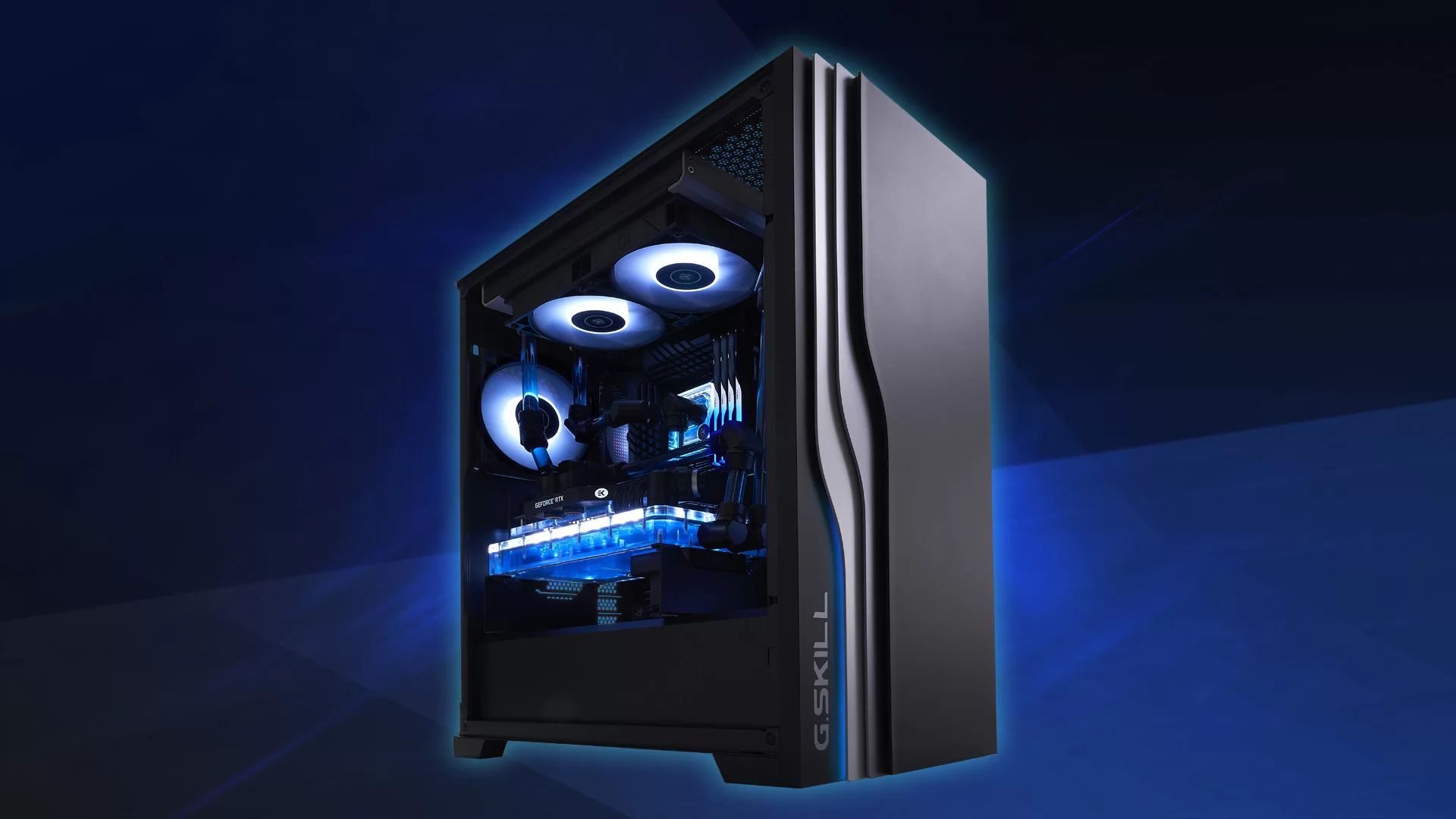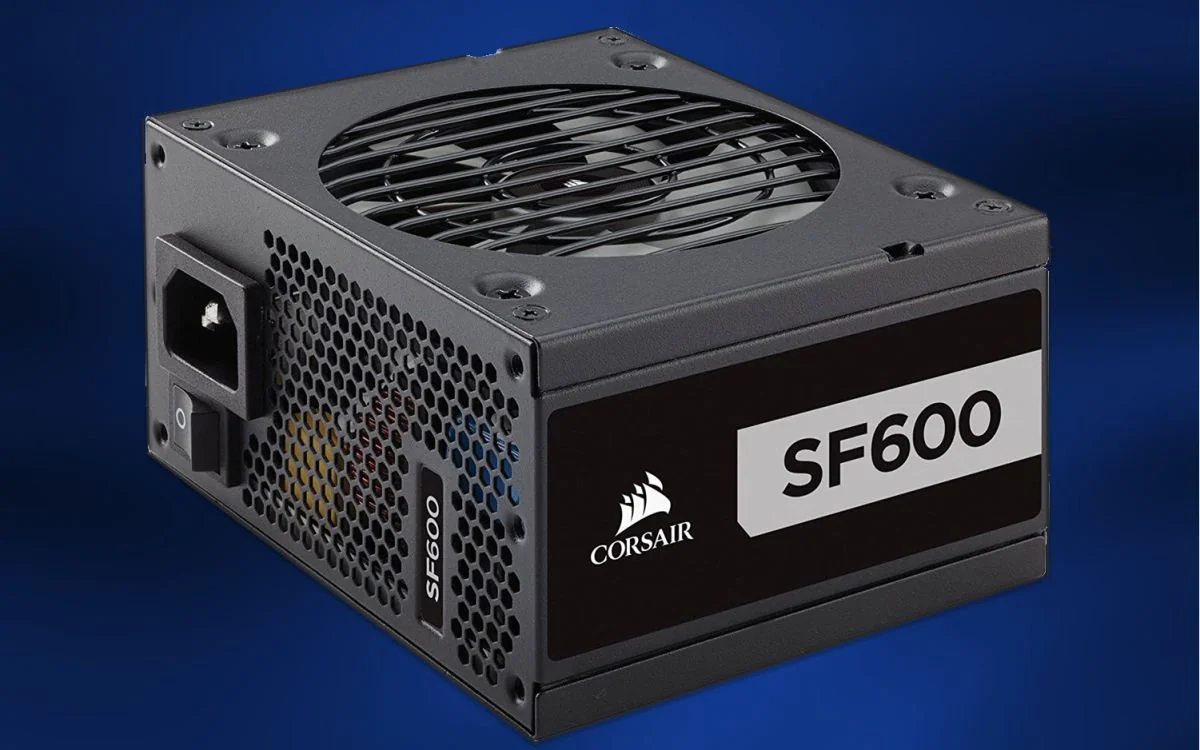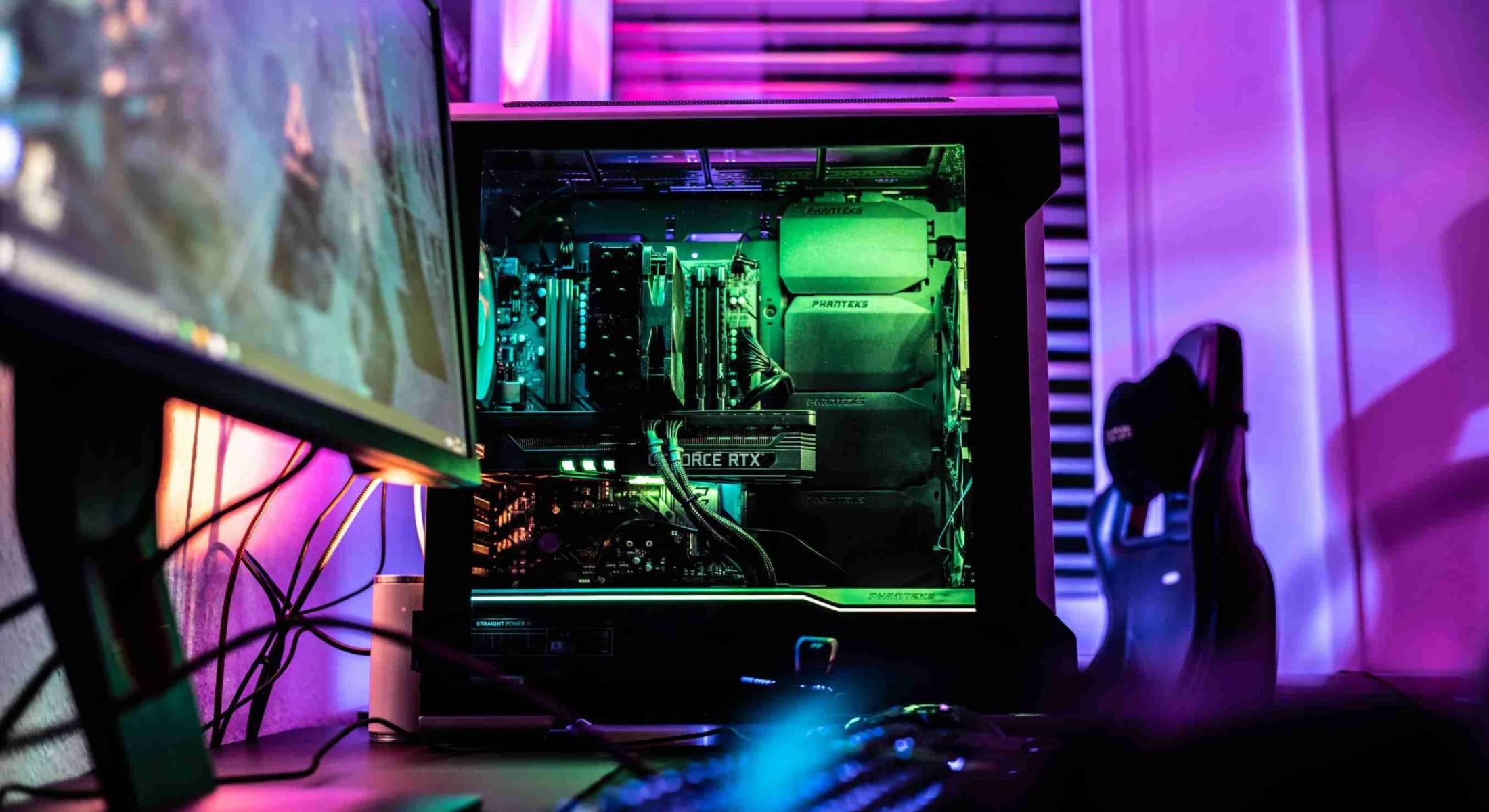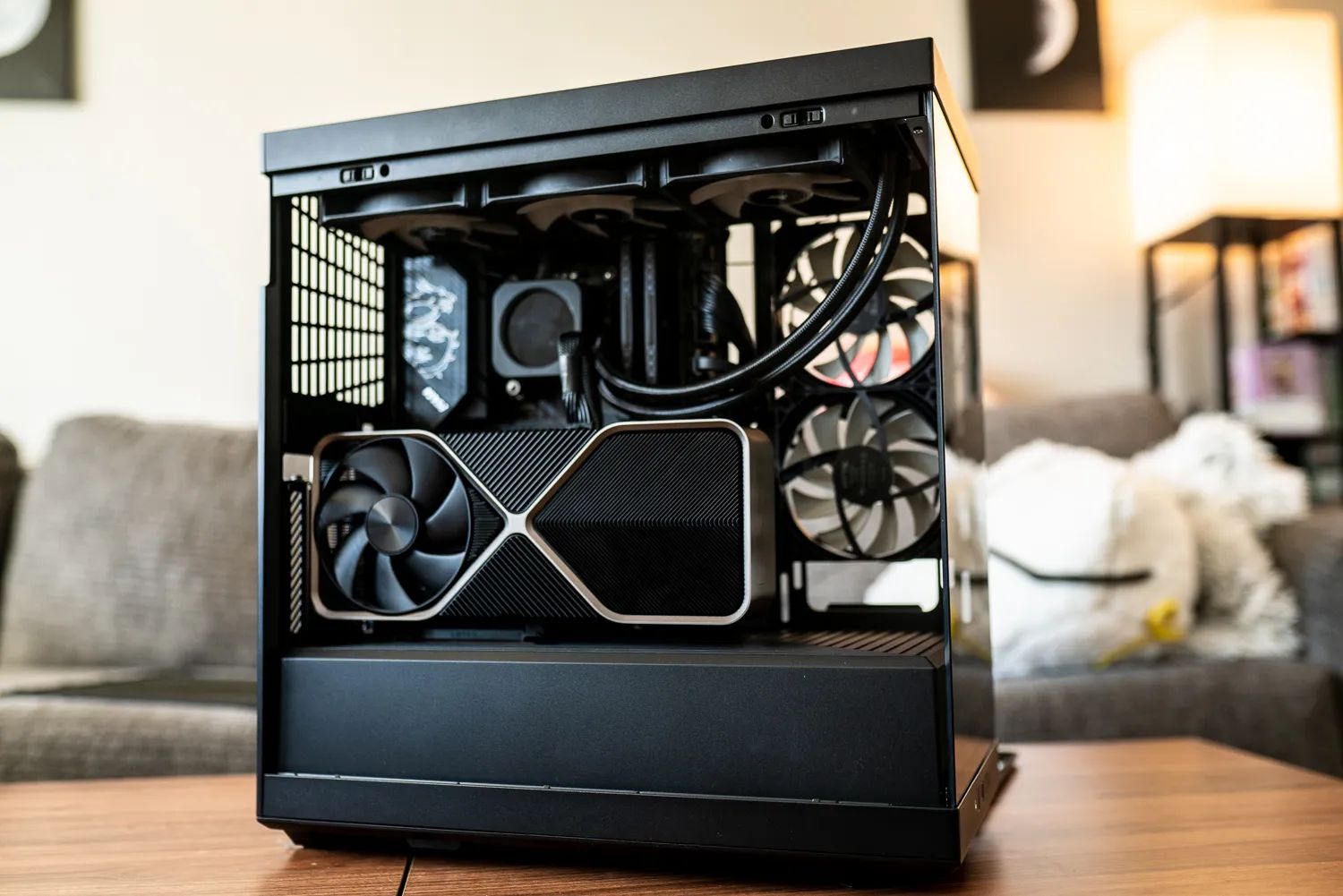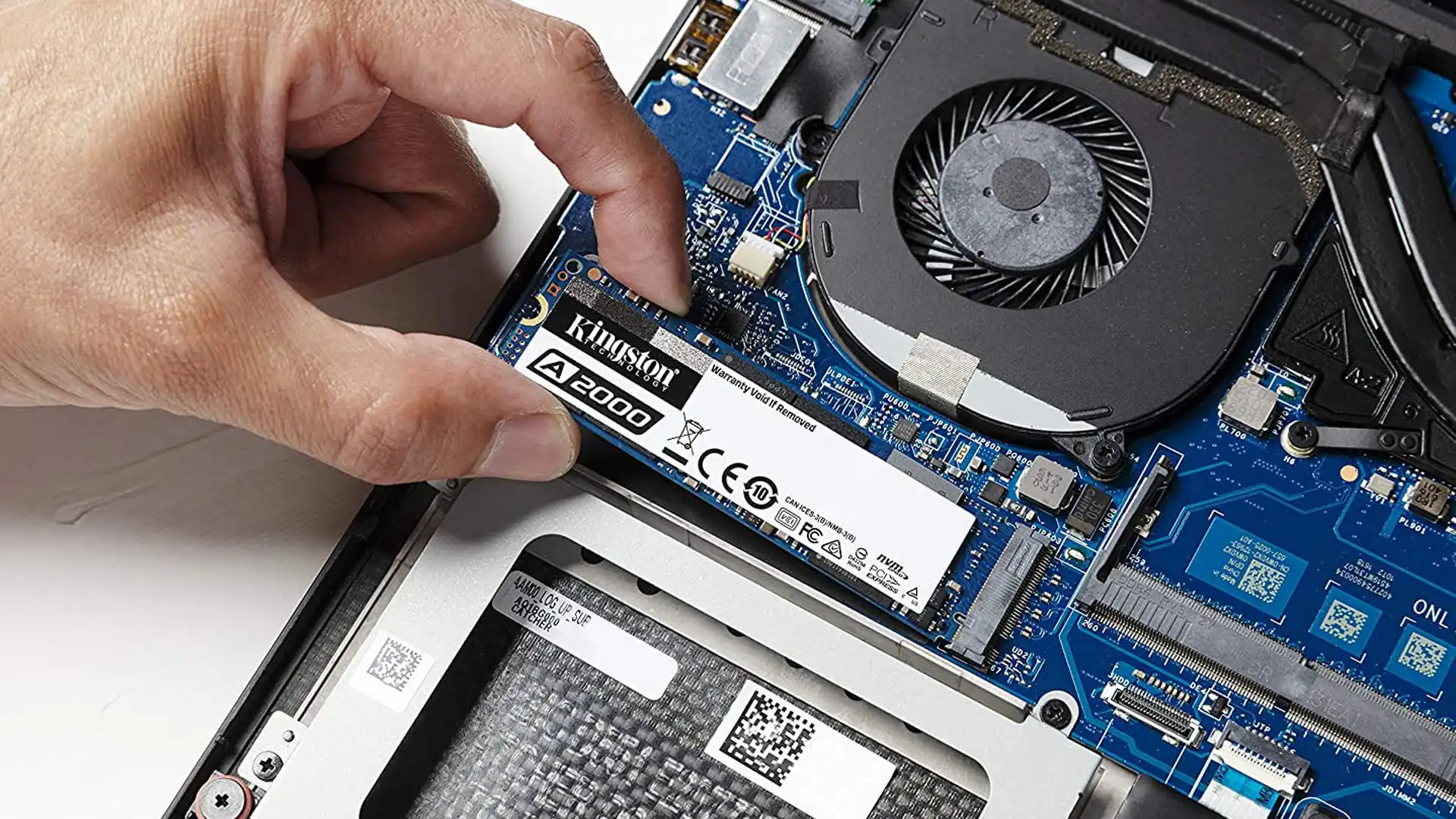Introduction
When it comes to building a PC, there are countless components to consider – from the processor to the graphics card. However, one often overlooked but crucial element is the PC case. The case is not only responsible for housing and protecting all the internal components but also plays a significant role in the overall functionality and aesthetics of the computer.
Choosing the right PC case can be a daunting task, especially with the wide range of options available in the market. One of the key factors to consider is the budget. How much should you spend on a PC case? Is it worth splurging on a high-end model, or can you achieve the desired results with a budget option?
In this article, we will delve into the world of PC cases and explore the various factors to consider before making a purchase. We will also discuss different price ranges to help you determine the ideal amount to invest in your PC case.
While it may be tempting to simply opt for the cheapest PC case available, it is important to remember that the case is a long-term investment. A good quality case can not only provide better airflow and cooling for your components but can also accommodate future upgrades, making it a wise investment in the long run.
Furthermore, a well-designed PC case can enhance the overall aesthetics of your build. With sleek designs, tempered glass panels, and customizable RGB lighting options, PC cases are now more than just functional enclosures; they are works of art that showcase your personal style and passion for technology.
So, whether you are a budget-conscious individual looking for the best bang for your buck, or a discerning enthusiast seeking top-notch features and aesthetics, finding the right PC case within your price range is a crucial decision.
In the following sections, we will explore the various price ranges available for PC cases, ranging from budget options to mid-range models, all the way up to high-end, premium cases. By understanding the features and benefits of each price range, you will be able to make an informed decision and find the perfect PC case to suit your needs and budget.
Factors to Consider Before Buying a PC Case
Before diving into the world of PC cases, it is important to consider several factors that will help you make an educated decision and choose a case that meets your specific requirements. Let’s explore some of these essential factors:
- Budget: The first consideration when buying a PC case is your budget. Determine how much you are willing to spend, keeping in mind that investing in a good quality case will benefit you in the long run. Decide on a reasonable price range that suits your needs and provides value for your money.
- Size and Form Factor: PC cases come in various sizes, ranging from small form factors to larger, full-tower cases. Consider the components you plan to use and ensure the case can accommodate them without any size limitations. Additionally, take into account the form factor of your motherboard (ATX, MicroATX, Mini-ITX) and choose a case that supports it.
- Cooling and Airflow: Proper cooling is essential to ensure optimal performance and longevity of your PC components. Look for cases that provide adequate airflow and support for additional fans or liquid cooling solutions if needed. Consider the placement of air vents, dust filtration, and cable management options to maintain a clean and cool system.
- Storage Options: Evaluate your storage needs and choose a case that offers sufficient drive bays or SSD mounting options. Consider whether you require hot-swappable bays, support for larger hard drives, or M.2 slots for faster storage options.
- Expansion Slots: Determine the number of expansion slots you require for additional components such as dedicated graphics cards, sound cards, or Wi-Fi cards. Ensure the case has enough room for future expansion if needed.
- Connectivity and Ports: Check the front panel connectivity options of the case, including USB ports, audio jacks, and other desired features like USB-C or SD card readers. Make sure the case provides the necessary connectivity options for your peripherals.
- Aesthetics and Design: While aesthetics may vary from person to person, choose a case that matches your preferred style and complements your overall build. Consider features such as tempered glass panels, RGB lighting, or customizable options to showcase your system’s visual appeal.
- Noise Levels: If noise is a concern, look for cases that offer sound-dampening materials or fan control options to minimize noise output. Check user reviews or specifications for noise levels to ensure a quieter computing experience.
By considering these factors, you will be able to narrow down your options and choose a PC case that meets your requirements, fits your budget, and provides the functionality and aesthetics you desire.
The Importance of a Good PC Case
When building a computer, it’s easy to get caught up in the excitement of selecting the latest and most powerful components. However, one component that should not be overlooked is the PC case. A good PC case is crucial for several reasons:
- Protection: A quality PC case provides a secure and protective enclosure for all of your valuable components. It shields them from dust, debris, and potential damage, ensuring their longevity and optimal performance.
- Airflow and Cooling: Proper airflow and cooling are essential for maintaining stable temperatures and preventing overheating. A well-designed PC case offers features such as strategically placed fans, mesh panels, and ample room for airflow, helping to dissipate heat and keep your components running at their best.
- Noise Reduction: A good PC case will have features that help minimize the noise generated by the system. This includes noise-dampening materials, fan mounts with rubber grommets to reduce vibration, and well-placed sound-absorbing panels. By reducing noise levels, you can enjoy a quieter computing experience.
- Expansion Flexibility: As technology advances, you may find the need to upgrade or add new components to your PC. A good PC case provides ample space for expansion, allowing you to accommodate additional hard drives, graphics cards, or other peripherals without constraints.
- Cable Management: Proper cable management is essential for a clean and organized build. A good PC case will offer sufficient routing holes, tie-down points, and ample space behind the motherboard tray to hide cables and ensure good airflow.
- Aesthetics: Your PC case is the face of your build and showcases your personal style. Choosing a well-designed case with features like tempered glass panels, RGB lighting, or unique aesthetics allows you to create a visually appealing system that you can take pride in.
Investing in a good PC case is not just about protecting your components; it’s about ensuring optimal performance, longevity, and a pleasant computing experience. With the right case, you can create a system that not only looks impressive but also performs at its best, whether you’re engaging in intense gaming sessions, content creation, or everyday tasks.
Now that we understand the importance of a good PC case, let’s explore different price ranges and their corresponding features to determine the right budget for your needs.
Budget PC Cases: Finding the Best Bang for Your Buck
When it comes to budget PC cases, you don’t have to sacrifice quality or functionality. There are plenty of affordable options available that provide excellent value for your money. Here are some key considerations when looking for the best budget PC case:
- Price: Budget PC cases typically range from $30 to $70, making them affordable options for those on a tight budget. Set a realistic price range that suits your budget.
- Build Quality: Even with a limited budget, it’s important to choose a case with good build quality. Look for sturdy materials such as steel or aluminum and ensure that the case feels solid and well-constructed.
- Airflow and Cooling: While budget cases may not offer extensive cooling options, ensure that they have at least one or two pre-installed fans and adequate ventilation. This will help to prevent overheating and maintain stable temperatures for your components.
- Compatibility: Check if the case supports the form factor of your motherboard and the length of your graphics card. Ensure that there are sufficient drive bays or SSD mounting options to accommodate your storage needs.
- Cable Management: Look for budget cases with decent cable management features such as routing holes and tie-down points. Good cable management not only improves airflow but also makes the overall build look neater.
- Ease of Installation: Consider the ease of installation and accessibility of the case. Look for tool-less drive bays, removable dust filters, and accessible I/O ports for a convenient user experience.
- Aesthetics: While aesthetics may not be a top priority for budget cases, you can still find options with a clean and minimalistic design. Some cases may also offer tempered glass side panels or subtle RGB lighting accents.
By considering these factors, you can find a budget PC case that provides the necessary features and functionality without breaking the bank. Some popular budget cases include the Cooler Master MasterBox Q300L, NZXT H510, and Fractal Design Focus G. These models offer a good balance of affordability, quality, and basic features.
Remember to read reviews and user feedback to gain insights into the performance and build quality of the case you are considering. Additionally, keep an eye out for sales, discounts, or bundle deals, which can provide even better value for your budget.
Now that we’ve explored budget-friendly PC cases, let’s move on to the mid-range price bracket, where you can find cases with additional features and enhanced build quality.
Mid-Range PC Cases: Striking a Balance Between Price and Quality
Mid-range PC cases offer a step up in terms of build quality, features, and design compared to budget options. With a slightly higher price range of $70 to $150, these cases strike a balance between affordability and premium features. Here are the key factors to consider when looking for a mid-range PC case:
- Build Quality: Mid-range cases often feature better build quality with materials like steel, aluminum, or tempered glass panels. These cases are more durable and provide a more premium feel compared to budget options.
- Airflow and Cooling: Look for mid-range cases that offer improved airflow, often with multiple pre-installed fans or support for additional fan mounts. Some mid-range cases may also include dust filters for better protection against dust accumulation.
- Compatibility and Expansion: Mid-range cases generally have better compatibility, accommodating a wider range of components. Check for ample space to accommodate longer graphics cards, additional drive bays, and support for water cooling solutions if you plan to upgrade in the future.
- Cable Management: Mid-range cases often provide more cable management options, such as rubber grommets, Velcro straps, and dedicated cable routing channels. These features help to keep cables organized and improve overall airflow within the case.
- Modularity and Convenience: Some mid-range cases offer modular designs or tool-less features, making installation and upgrades easier. Look for removable drive cages, PSU shrouds, and tempered glass panels that can be effortlessly removed for easy access to components.
- Aesthetics: Mid-range cases often prioritize aesthetics, offering sleek designs, customizable RGB lighting, and tempered glass side panels to showcase your build. Look for cases that match your personal style and complement your overall setup.
Popular mid-range PC cases include the NZXT H710i, Phanteks Eclipse P400A, and Corsair Crystal 460X RGB. These cases provide a balance between price and quality, offering improved features and aesthetics without breaking the bank.
Consider your specific needs and preferences when selecting a mid-range case. If you value premium build quality, improved cooling options, and convenient installation features, investing in a mid-range case is worth considering.
Now that we’ve covered mid-range PC cases, let’s move on to the high-end category, where you can find top-of-the-line cases packed with advanced features and exceptional aesthetics.
High-End PC Cases: Splurging for Top-notch Features and Aesthetics
For those looking for the ultimate PC case experience, high-end options offer top-notch features, exceptional build quality, and stunning aesthetics. With a price range starting around $150 and potentially going well beyond $300, these high-end cases are designed for enthusiasts and gamers seeking the best of the best. Here’s what you can expect from high-end PC cases:
- Premium Build Quality: High-end cases are constructed with premium materials like aluminum, tempered glass, or even exotic materials like carbon fiber. These cases are built to last, offering superior durability and a luxurious feel.
- Advanced Cooling Solutions: High-end cases often come with advanced cooling options, such as support for custom water cooling loops, extensive fan mounts, and airflow optimization features. These cases prioritize excellent thermal management to keep your components cool even under heavy loads.
- Expandability and Versatility: High-end cases have ample room for expansion, accommodating multiple GPUs, extensive storage solutions, and numerous fan or radiator configurations. These cases are designed for enthusiasts who require maximum flexibility for their high-performance builds.
- Optimized Cable Management: High-end cases boast exceptional cable management features, including concealed cable channels, integrated cable routing options, and dedicated cable management zones. These features not only improve airflow but also showcase a clean and organized interior.
- Customization and Aesthetics: High-end cases excel in aesthetics, offering sleek designs, customizable RGB lighting, and tempered glass panels that beautifully showcase your components. These cases make a statement with their striking visual appeal and bring an extra level of sophistication to your setup.
- Noise Dampening: Many high-end cases prioritize noise reduction and include sound-dampening materials, anti-vibration mounts, and intelligent fan control systems. This ensures a quieter computing experience without compromising on performance.
Some notable high-end PC cases include the Lian Li O11 Dynamic XL, Corsair Obsidian 1000D, and Phanteks Enthoo Elite. These cases offer exceptional features, meticulous craftsmanship, and stunning aesthetics that cater to the demands of high-performance builds.
If you’re a discerning user who values top-of-the-line features, uncompromising build quality, and aesthetics that leave a lasting impression, investing in a high-end PC case is the way to go.
Now that we’ve explored high-end PC cases, let’s move forward and discuss how to determine the appropriate price range for your specific needs and preferences.
How to Determine the Right Price Range for Your PC Case
Choosing the right price range for your PC case requires considering your specific needs, priorities, and budget. Here are some key factors to help determine the appropriate price range:
- Budget: Start by setting a realistic budget for your overall PC build. Allocate a portion of that budget specifically for the case, keeping in mind that the case is a long-term investment that can provide benefits in terms of protection, cooling, and aesthetics.
- Component Requirements: Consider the components you plan to use in your build. If you have high-end or power-hungry components that require advanced cooling solutions or extra space, you may need to invest in a higher-priced case that can accommodate these needs.
- Future Upgradability: Think about your future plans for your PC. If you anticipate upgrading or adding components in the near future, it may be wise to choose a case that provides ample room for expansion and supports the features you will require down the line.
- Aesthetics and Personal Style: Determine how important aesthetics are to you. A PC case not only houses your components but also contributes to the overall visual appeal of your build. If aesthetics are a top priority, you may want to invest in a case with premium materials, unique designs, and customizable RGB lighting options.
- Noise Levels: Consider your preference for a quiet computing experience. If noise reduction is crucial, look for cases with sound-dampening materials and optimized fan configurations, which might be found in the mid-range or high-end price brackets.
- Additional Features: Think about any additional features you desire, such as extensive cable management options, easy installation mechanisms, integrated RGB controllers, or advanced fan control systems. Compare the availability of these features across different price ranges to find the right balance.
By evaluating these factors, you can determine the appropriate price range for your PC case. Remember that finding the right case involves finding the sweet spot between your desired features, build requirements, and allocated budget.
It’s important to research and read reviews from trusted sources or seek recommendations from the PC building community to gain insights into the performance, build quality, and value for money of different cases within your chosen price range.
Now that we have discussed determining the right price range, let’s move forward and explore the different types of PC cases available and their corresponding price ranges.
Different Types of PC Cases and Their Price Range
PC cases come in various types, each catering to different build requirements, form factors, and styles. Here are some of the common types of PC cases and their corresponding price ranges:
- Mini-ITX Cases: Mini-ITX cases are the smallest form factor cases, designed for compact builds. These cases typically have limited space for components but are perfect for those looking for a portable or space-saving setup. Mini-ITX cases can range from budget-friendly options starting around $30 to high-end versions exceeding $200.
- MicroATX Cases: MicroATX cases offer a larger form factor compared to Mini-ITX cases, providing more room for components and expansion. These cases are suitable for versatile builds and range in price from around $50 for budget models to over $150 for feature-rich options.
- Mid Tower Cases: Mid tower cases are the most common and popular type, offering a good balance between size, functionality, and affordability. These cases provide ample space for components and cooling options and typically fall within the mid-range price bracket of $70 to $150.
- Full Tower Cases: Full tower cases are the largest and most spacious options available. They offer extensive room for multiple graphics cards, liquid cooling solutions, and numerous storage options. Full tower cases generally cater to enthusiasts and professionals and can range from $150 to well over $300, with high-end options reaching even higher price ranges.
- Specialized Cases: There are also specialized cases catering to specific needs. For example, HTPC (Home Theater PC) cases are designed to blend seamlessly with home theater setups, while open-air cases provide enhanced cooling and showcase-oriented designs. These specialized cases can have varying price ranges depending on their unique features and target audience.
When considering the type of PC case, it’s essential to evaluate your build requirements, desired form factor, and available space. Additionally, factor in your budget and prioritize the features that are most important to you.
Remember that the price range within each type of case can vary depending on the brand, materials used, included features, and overall build quality. Be sure to research and read reviews to ensure you’re investing in a case that meets your expectations in terms of both performance and value.
Now that we’ve explored the different types of PC cases and their price ranges, let’s move forward and discover how to find deals and discounts on PC cases to optimize your purchasing decision.
Finding Deals and Discounts on PC Cases
When shopping for a PC case, finding deals and discounts can help you save money and get the most value out of your purchase. Here are some strategies to help you find great deals on PC cases:
- Compare Prices: Before making a purchase, compare prices from different retailers both online and offline. Visit reputable computer hardware stores, check e-commerce platforms, and consider purchasing from manufacturer websites to find the best price for the specific case you desire.
- Check for Sales and Promotions: Keep an eye out for seasonal sales events such as Black Friday, Cyber Monday, or back-to-school sales. Many retailers offer significant discounts during these periods, allowing you to snag a PC case at a lower price.
- Subscribe to Newsletters and Notifications: Subscribe to newsletters and follow your favorite PC hardware retailers and manufacturers on social media. This way, you can receive updates on upcoming sales, exclusive discounts, or promo codes that can be applied during checkout.
- Set Price Alerts: Utilize price tracking websites or browser extensions that allow you to set price alerts for specific PC cases. These tools will notify you when the price drops to your desired range, ensuring you never miss out on a good deal.
- Consider Open Box or Refurbished Options: Open box or refurbished PC cases can often be purchased at a discounted price. These items are usually in good condition and come with a warranty, offering a cost-effective solution without sacrificing quality.
- Bundle Deals: Look for bundle deals that combine a PC case with other components such as power supplies, fans, or RGB controllers. These bundles can offer savings, especially if you plan to purchase additional components in the near future.
- Community Forums and Secondhand Markets: Consider checking out online community forums, subreddits, or secondhand markets where PC enthusiasts buy and sell used hardware. You might find someone selling a gently used PC case at a lower price, allowing you to save money while still getting a quality product.
Remember to prioritize reliability, warranty coverage, and customer service when purchasing a PC case, even when seeking deals. It’s important to ensure that you’re buying from reputable sellers or trustworthy sources to avoid potential issues.
By utilizing these strategies and keeping a vigilant eye on discounts and promotions, you can find great deals on PC cases and ultimately save money on your build.
Now that we’ve explored finding deals and discounts, let’s conclude by summarizing the key factors to consider when selecting a PC case and making your final decision.
Conclusion
Choosing the right PC case is a crucial decision when building a computer. It not only provides a protective enclosure for your components but also plays a vital role in cooling, aesthetics, and overall functionality. By considering various factors such as budget, size, cooling capabilities, compatibility, and personal preferences, you can determine the ideal price range and type of case that suits your needs.
For budget-conscious individuals, there are plenty of budget PC cases available that offer solid build quality, decent airflow, and essential features without breaking the bank. Mid-range cases strike a balance between price and quality, providing expanded options for cooling, expandability, and cable management. For enthusiasts who desire top-notch features, exceptional aesthetics, and advanced cooling solutions, high-end cases are the way to go.
When choosing a PC case, it’s important to assess your specific requirements, future upgrade plans, desired aesthetics, and noise preferences. Read reviews, compare prices, and stay updated on promotions to find the best deals and discounts on PC cases.
Remember, the right PC case should not only meet your functional needs but also reflect your personal style and create a visually appealing system. With the right case, you can not only protect and optimize your components but also showcase your passion for technology.
So, take your time, research thoroughly, and make an informed decision when selecting the perfect PC case for your build. With the right choice, you can create a PC that not only performs exceptionally but also stands out as a visual masterpiece.







